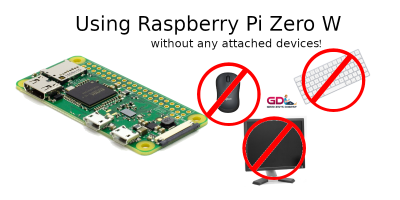

ini file with Notepad++ and change enable=true to enable=false.
 To stop the display from refreshing, run clear.py. Step 6 - Try running the scripts through terminal. Step 5 - Use systemd to run clear.py script before shutdown. Step 4 - Use Cron to run update.py every 4 mins.
To stop the display from refreshing, run clear.py. Step 6 - Try running the scripts through terminal. Step 5 - Use systemd to run clear.py script before shutdown. Step 4 - Use Cron to run update.py every 4 mins.  Step 4 - Use systemd to run update.py every 4 mins. Step 3 - Make sure the ePaper driver is in. Step 2 - Make sure Python 3 is installed. Step 1 - Acquire the necessary components and connect them. The README.md is very extensive so it would be better to link it here than copy-paste 300-400 lines of. See step-by-step instructions with photos and ready-to-copy-paste command line at my GitHub repository RPiDev. Not including the Raspberry Pi 400, this only costs ~20 USD. This project only requires a ePaper display, a HAT that helps breakout the awkward GPIO layout of the Raspberry Pi 400, and some good old software. Since this is taking the first step into the world of Raspberry Pi projects, I needed a project that was inexpensive to do and required few components (considering the shortages and scalping at the time of writing). This project is the perfect vehicle for learning to use the Linux terminal (especially apt, cp, less, systemctl, systemd, crontab, cd), and practice some python while I'm at it. I had self-studied python in my free time but didn't have many opportunities to put it to use. I'm a professional Java full stack web developer at a bank and I wanted to learn more about Linux command line. These are useful functions transferable to future projects. The python script does what any robust software should and takes various test cases into consideration: The scripts clear.py (clears the display) and update.py (gets and writes data onto the display) are written in python. on a Waveshare ePaper (250 x 122 pixels, 2.13 inch EPD HAT for Raspberry Pi, Black/White, RPI SPI interface) connected to a Adafruit Cyberdeck Bonnett (which then connects to the Raspberry Pi 400's GPIO pins).
Step 4 - Use systemd to run update.py every 4 mins. Step 3 - Make sure the ePaper driver is in. Step 2 - Make sure Python 3 is installed. Step 1 - Acquire the necessary components and connect them. The README.md is very extensive so it would be better to link it here than copy-paste 300-400 lines of. See step-by-step instructions with photos and ready-to-copy-paste command line at my GitHub repository RPiDev. Not including the Raspberry Pi 400, this only costs ~20 USD. This project only requires a ePaper display, a HAT that helps breakout the awkward GPIO layout of the Raspberry Pi 400, and some good old software. Since this is taking the first step into the world of Raspberry Pi projects, I needed a project that was inexpensive to do and required few components (considering the shortages and scalping at the time of writing). This project is the perfect vehicle for learning to use the Linux terminal (especially apt, cp, less, systemctl, systemd, crontab, cd), and practice some python while I'm at it. I had self-studied python in my free time but didn't have many opportunities to put it to use. I'm a professional Java full stack web developer at a bank and I wanted to learn more about Linux command line. These are useful functions transferable to future projects. The python script does what any robust software should and takes various test cases into consideration: The scripts clear.py (clears the display) and update.py (gets and writes data onto the display) are written in python. on a Waveshare ePaper (250 x 122 pixels, 2.13 inch EPD HAT for Raspberry Pi, Black/White, RPI SPI interface) connected to a Adafruit Cyberdeck Bonnett (which then connects to the Raspberry Pi 400's GPIO pins).










